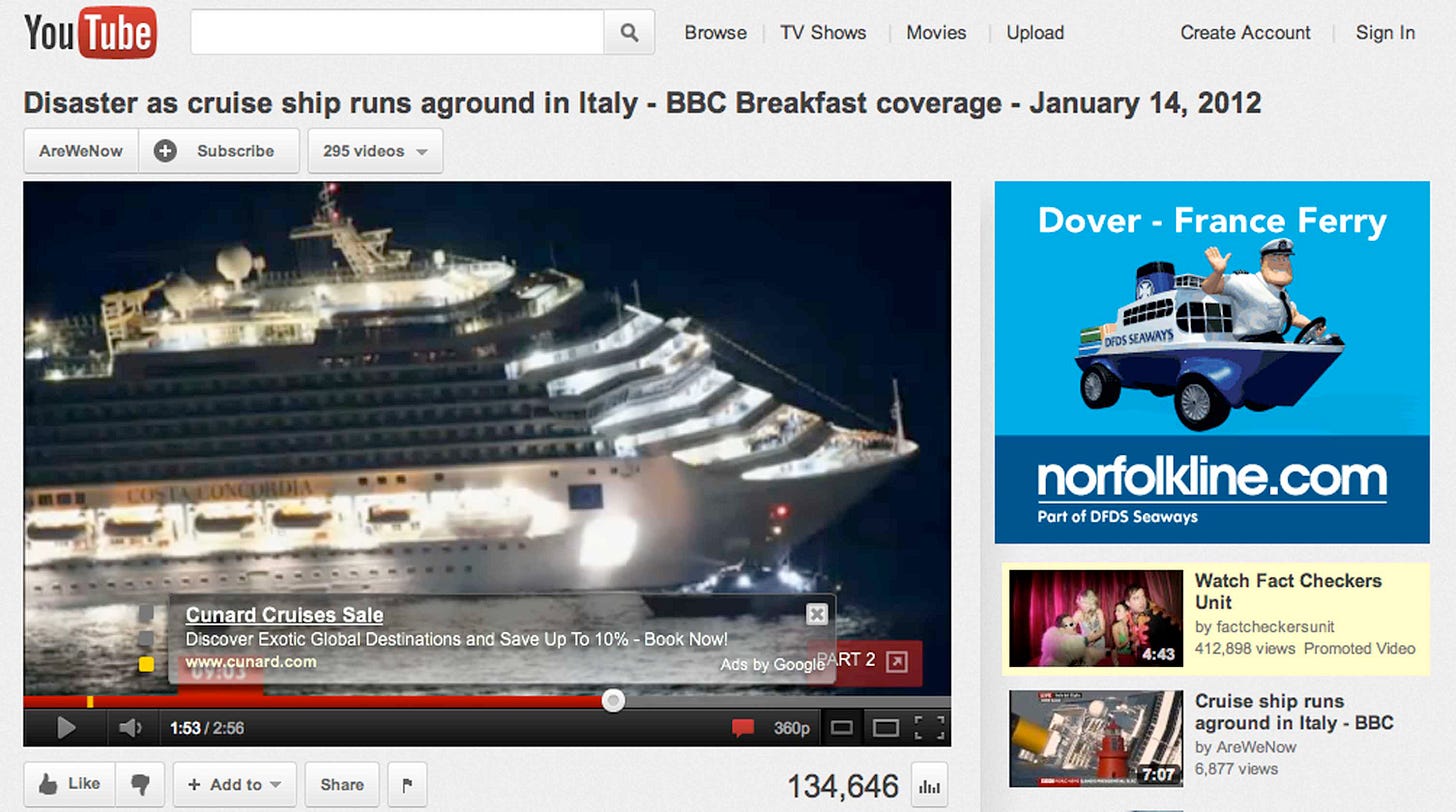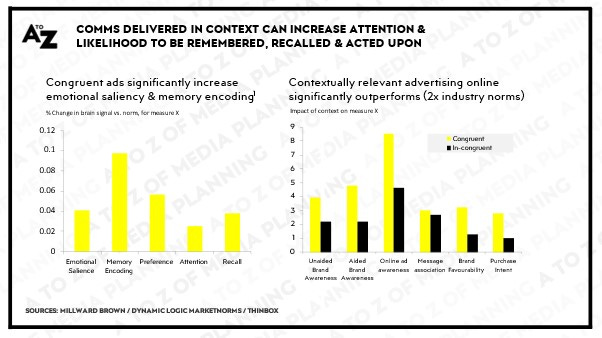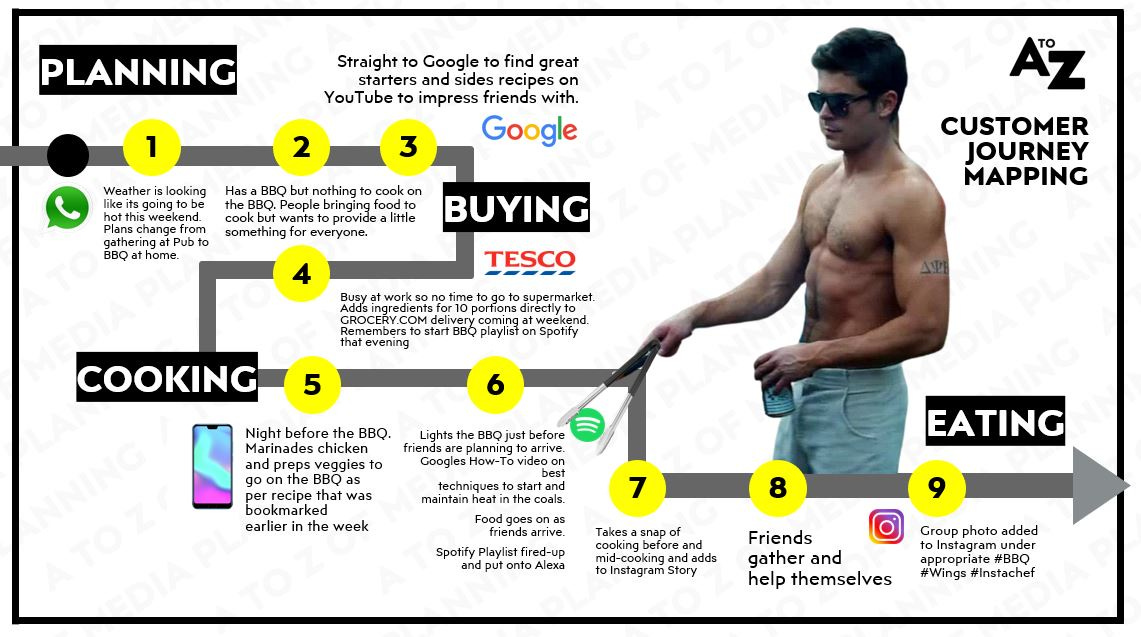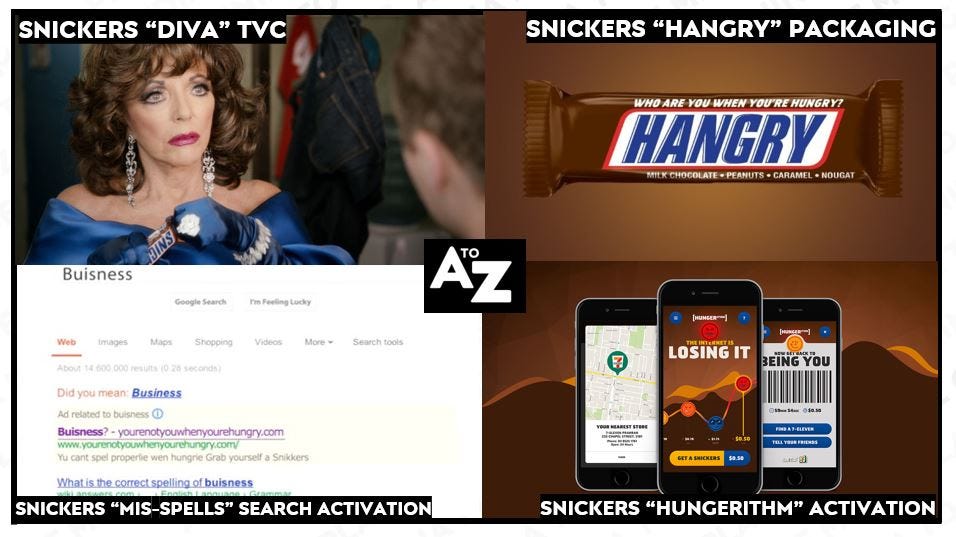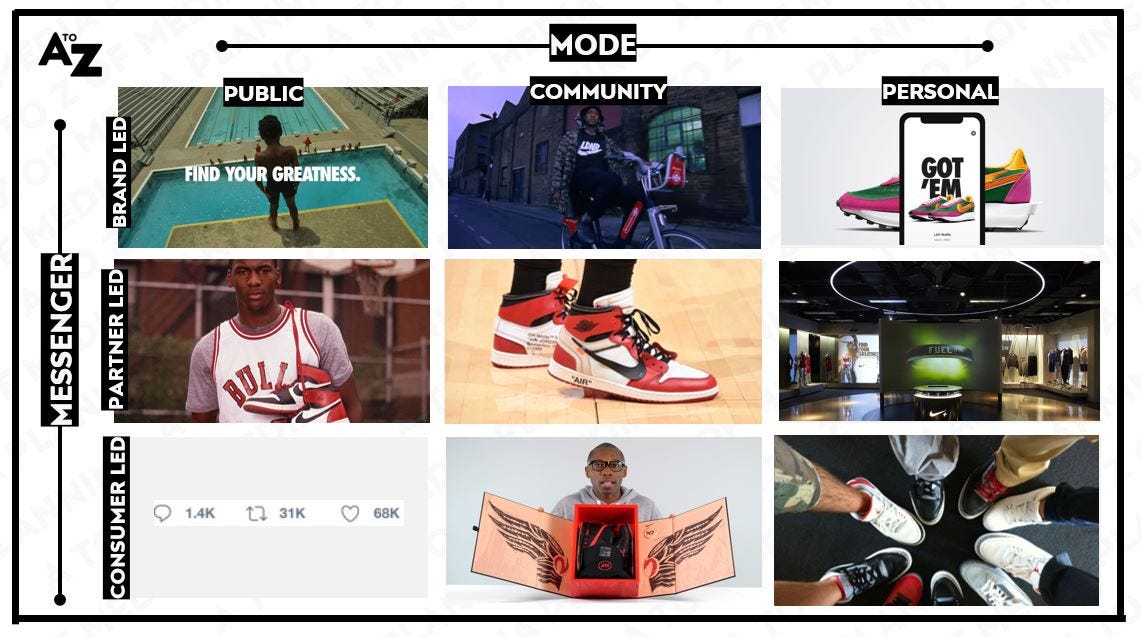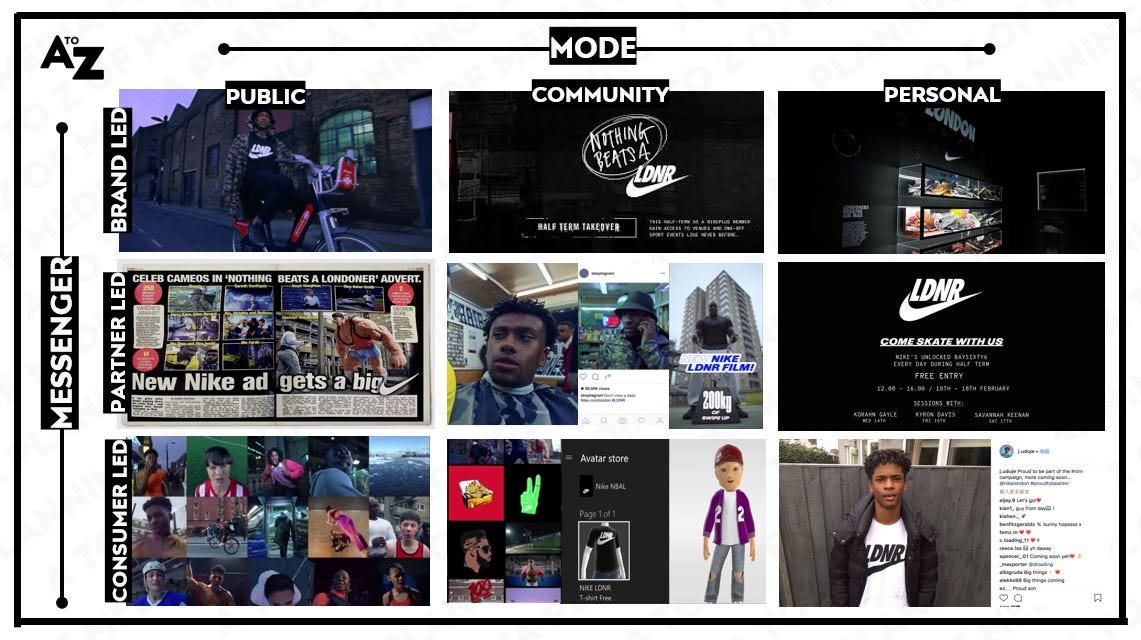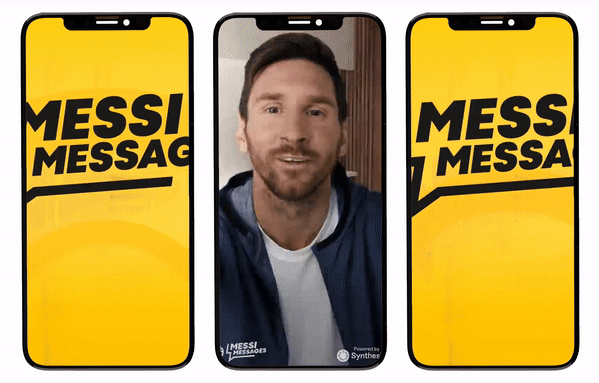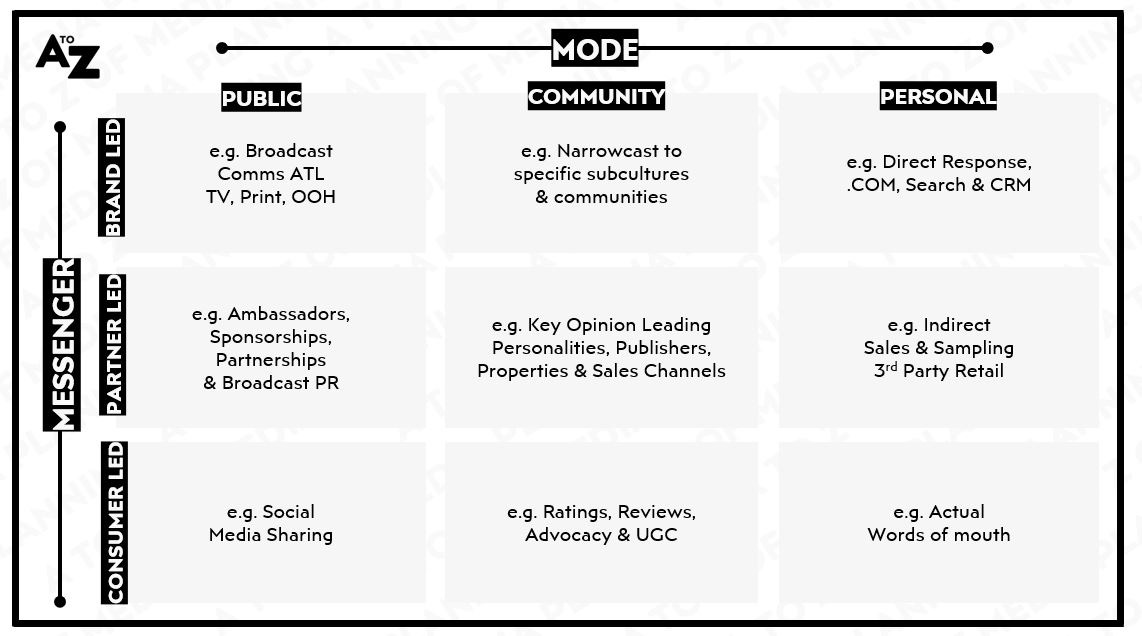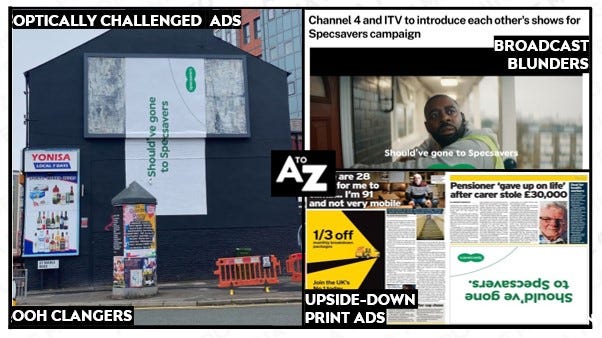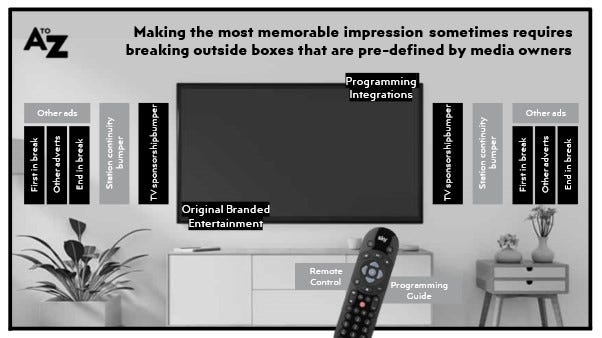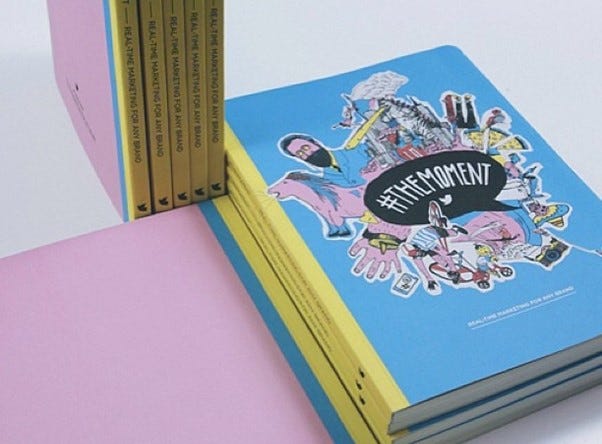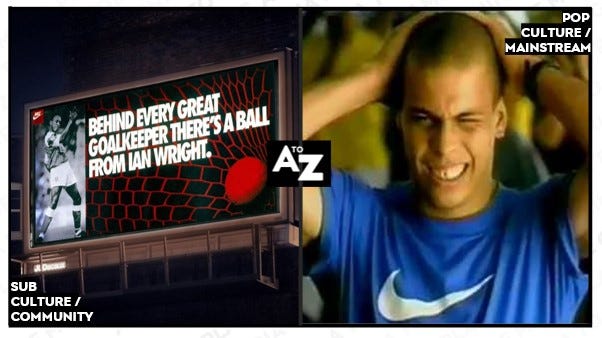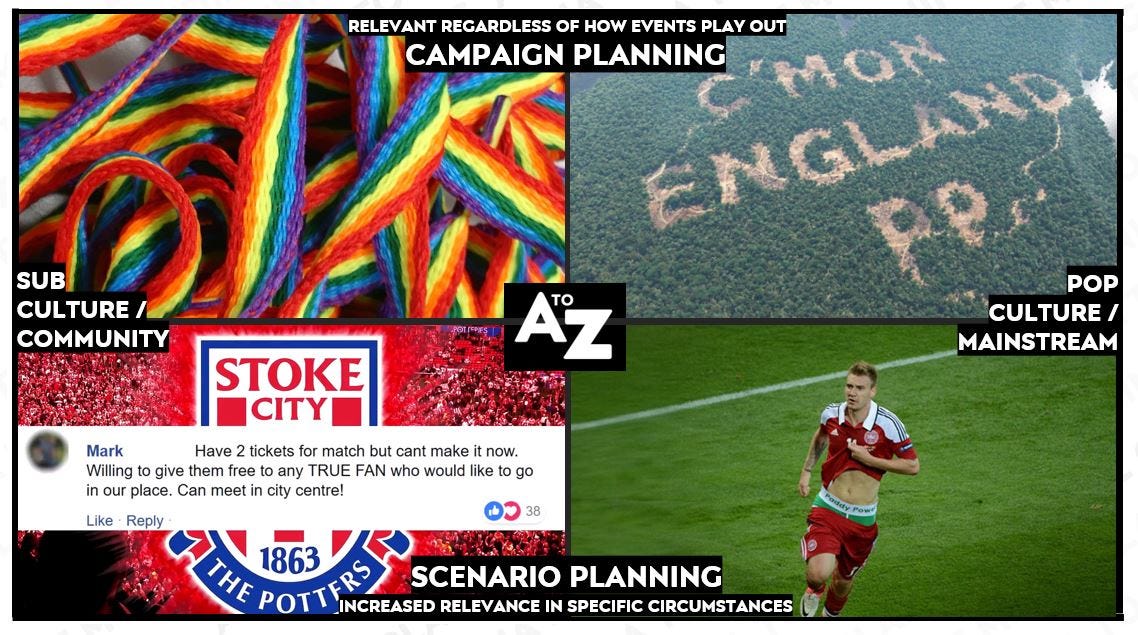C is for...Context
Consumer-Led, Creative-Led & Culturally-Led contexts that might super-charge your next campaign
As the deprecation of 3rd party cookies fast approaches, context-based solutions have been tipped to close the impending gap in many marketers toolkits.
Whilst sophisticated contextual solutions to date have predominantly been used to shut-off contexts deemed either not to be safe, or suitable. Ahem…
…the emphasis has now switched from using context as a safeguard, to seeing context as a spearhead to inform where a brand and its advertising should show up in potentially more effective ways.
As this conversation has evolved, it’s occurred to me that many have become so fixated with creating social posts and pumping them out in the largely contextless world of Social Media advertising; we’ve become less attuned to scouting for and selecting contexts that might make our clients comms pop harder than they otherwise might.
Given advertising delivered in context has long been proven to increase all of the good measures as evidenced below – it feels like we’re going back to the future.
With that in-mind I’m going to walk through the various ways I look to seek out contexts that might work harder at delivering disproportionate attention, associations and actions for a client’s brand or campaign.
Hence C is for Context…
Where I’ll start with Consumer-Led contexts, then move on to Creative-Led ones, before finishing with broader Culturally-Led moments a brand might tap into, to increase the intensity of consumer response or better build shared meaning.
This is by no means an exhaustive list but are my go-tos.
Let me know which methods you might have up your sleeve to take mine up a level.
So let’s start with the Consumer.
CONSUMER-LED CONTEXTS
Getting closer to how people journey through the market you operate in, how often, can unpack moments they might be more receptive, more likely to remember, more likely to act on whatever you are putting out there into the world.
I’ve illustrated this with a super simplistic view of how young people might plan, buy, cook and enjoy BBQing for friends pulled together with post-it-notes when pitching for a condiments business.
Get to the key Triggers, Influences & Actions along the customer journey
Whilst at first glance it might not seem that helpful to construct a media plan, this type of exercise is really good for pulling apart the main Triggers that bring people into market, what the key Influences might be along the journey that shape decision making and the subsequent Actions they might take where, when and with whom.
Knowing this you can then go away and quantify the relative size of behaviour in each of those moments and see whether it’s significant enough to consider incorporating into a plan of action, or interesting enough to build a creative idea from.
In this instance contexts such as good weather, search engines, foodie publishers, recipe videos, party playlists and Instagram #s all become potential jumping off points to either build an ongoing presence, or a starting point to create more interesting work.
A great example from food and drink being Barilla’s Pasta Playlists created on Spotify that helped people cook their pasta for the perfect amount of time – thus facilitating and associating with great pasta.
Your exploration you may even find a moment or context so significant, or ripe with potential, that it becomes ‘the’ moment you wish to associate with, rather than one solely to target with media to be present within.
Snickers and “Hangriness” being a great example where over time they do things that people come to expect of them, but they always deliver it in an unexpected way.
Links to Diva, Mis-Spells & Hungerithm here.
Which neatly leads to the next set of contexts I’m going to walk through.
CREATIVE-LED CONTEXTS
Where the creative idea, be it for a specific campaign or activation, or a longer-term brand idea become the starting point to search for contexts where media + creative come together to give that idea more cultural or commercial clout than it otherwise might.
Whilst some will have an intuitive nose for where media might be brilliant at extending an idea beyond an initial TV script or key visual – I either subconsciously wonder or very consciously go through a process of scribbles on whiteboards to think about.
Going Broad | Messenger vs. Mode
Getting Specific | Creative Uses of Channels
Let’s start broad with Messenger vs. Mode where the map below is helpful at bringing you out of a specific box or discipline, to think harder about what other elements that clients could tap into might help them deliver their goals.
Because as Naked used to say Everything Communicates!
Firstly The Messenger.
Where I encourage myself to think who the most compelling messenger might be.
Is it the brand itself or could it be someone else, or something else, or a combination that has the potential to be more credible, more compelling, or more actionable in the minds of the consumers we’re trying to connect with either instead of or in addition to a TV script or Key Visual.
Then The Mode.
Where I encourage myself to think more about what modes of communication could or should be considered.
Whilst in most scenarios broadcast will be the lead mode through public-facing media (I do work in an media agency) sometimes more memorable encounters might be built through connections with specific communities or even one-on-one interactions.
Let’s take Nike as a familiar example to illustrate to illustrate the differences in Messengers they employ.
Their BRAND-LED work spans both broadcast moments applicable to all, as per their “Greatness” campaign, work designed with specific communities in-mind, such as Nothing Beats a Londoner , as well as one-on-one connections through their various retail, running clubs or SNKRs apps.
Their PARTNER-LED work spans public ambassadorships with sporting icons across all sports, collaborations designed to resonate with Sneakerheads, through to choosing to launch their original innovation lab back in 2012 in Selfridges , rather than their own flagship store in London, to borrow credibility for the initiative from the world’s best department store.
As Nike benefit from being such a culturally resonant brand – people are more than happy to act as an extension of their marketing department with CONSUMER-LED communications. Be that through wearing their product, re-selling it at significant mark-ups , creating unboxing videos, or just sharing their approval of the latest round of provocative or celebratory campaign work on social media.
Whilst these examples are exclusive of each other, each one of these boxes also can interplay and be re-mixed with the others to give a campaign idea additional stretch.
Let’s use Nike’s Londoner campaign to illustrate this below.
The campaign was designed with a large and influential group in-mind.
Young Londoners.
However rather than just use London-based media they took the message out in big, bold, PUBLIC media through a combination of ambassadors that featured in the campaign, debuted in ways that journalists would talk about the campaign, launched through kids that Nike were making the real stars of the campaign by bringing Hollywood production values to their Instagram Stories.
To connect with different COMMUNITIES talent from different domains, sports and subcultures across the capital were peppered through the ad, but also acted as an amplifier for the overall act with each celeb given their own edit to post on social media to add to the story as it rolled out across time.
To give consumers a chance to get involved, they created a bunch of virtual merch, gifs and memes to help spread the word across XBOX Live and Social Media.
To make a more PERSONAL connection, they took the spirit of the ad out of the advertising and into people’s everyday lives - creating an exhibit of London’s favourite AirMaxes you could tour online or in-person, a suite of partner-led activities that young Londoners could go to for free in their school holidays as well as dedicated merch inspired by the campaign that could allow people to symbolise they were part of the pack in real life.
In combination, these elements combined to create an even more authentic and memorable campaign.
FROM THEORY TO PRACTICE
When you take this map from a theoretical construct above, to a mapping exercise on a wall, towards a plan of action in real-life, there is an inevitable bleed between these boxes.
However, having a map like this in-mind can be super helpful when teasing out the possibilities of a creative idea or thinking about how any media strategy work that might be in-place could be expressed, or even may need revisiting if it only works well in one or two of the boxes.
I use them in my head like a card game – forcing myself and colleagues to think through the lens of say partner-led comms, using prominent public figures, but delivered through one-on-one communications.
A provocation that might lead to work such as Messi Messages where PepsiCo used their most famous ambassador to power a more compelling CRM play. Synthetic media enabled Lionel Messi to appear like magic in people’s whatsapp group chats.
Adding to their first-party data pool in a novel way.
To help prompt any similar work you might be starting, I’ve put some emphasis points for each box on the following graphic to cut and stick into a daybook.
Getting Specific | CREATIVE USES OF CHANNELS
As well as Messenger vs. Mode sometimes you have a creative idea, or something within it that’s just ripe for driving cut-through with more imaginative uses of media – where your creative side takes over and starts to think about what’s possible regardless of what the market mix modelling results might be telling you is the most effective choice of channel.
Where an unexpected use of media, or dare I say it a “media first” by its nature makes an idea standout.
Great examples of this could be the Snickers examples from earlier, or below where the MGOMD team in the UK knocked it out of the park last week for Specsavers to celebrate 20 years of their “Should’ve” campaign.
I’ll be doing a whole post dedicated to work such as the above, so won’t overly elaborate on this here, but if you would like to dive a bit more into “Should’ve” my good friend Tom Darlington has just written a piece on the campaign.
However, the key to getting to the most imaginative uses of media, more often, is to get familiar not just with the traditional spots and dots that might be available to you, but the spaces that sit between and often alongside what vendors might offer off-the-shelf, that might offer new ways of cutting through.
For example, with TV, don’t just think about spots of various lengths and their placement in-break, think about the other things you might use, choose, play with or create interplay with that might help your message pop harder than it otherwise might.
I’ve plotted some of these on the below visual.
There are lots of brilliant examples of brands and media planners playing around with these elements, but four of my favourites of recent times are…
UberEats Aussie Open Hack | Uber Eats utilised the spaces alongside them, in this case the action itself to make its advertising appear by magic
Lego Batman Movie’s Continuity Bat | Where Lego Batman replaced Channel 4s station programmers for the weekend of the movie Premiere
It’s a Tide Ad | Where Tide turned every ad and the action itself into a Tide ad
RNIB Through their eyes | Where Channel 4 & RNIB teamed up to create an ad-break to demonstrate how the 2 million people living with sight loss experience Television
Peloton Girl | Where Ryan Reynold’s Aviator Gin used the same actress that featured in a much derided Peloton TV ad, to make a spoof days later with her escaping what appeared to be loveless, fictional marriage
Coinbase’s QR Code | Where Coinbase simply figured out a bouncing QR code would stand-out amongst the celebrity-filled spots alongside them in The Superbowl
If you can take the spirit of the above into all channels, and expand your toolbox of techniques to think about what surrounds the usual spaces on offer, you’ll soon become a natural in thinking where you might take an idea out to people in more imaginative ways.
Which moves towards the last set of contexts that I’ll touch on in this post…
CULTURALLY-LED CONTEXTS
Brands are built through shared meaning.
Thinking through the lens of luxury - Rolexes, Porsches, Supreme Hoodies or AirDiordan’s can only act as status symbols, because enough people within the owner’s circles understand the relative cost or difficulty in acquiring them.
Therefore big, cultural moments where everyone is looking in the same direction are super-important to help brands build that meaning across enough people to grow.
There are things happening every day outside of ad-land, that you can connect your brand to in context, to appear more culturally connected – or simply offer an opportunity to take advantage of people’s interest in something and point it towards what you have to say or convey.
More often than not these days, when something interesting’s happening in the world you’ll hear about it on Twitter.
In their formative years they were excellent at helping budding planners get a sense of how to plan for the moments that were happening across their platform; big or small.
They published a great book called #TheMoment advising brands how real-time marketing can help connect what they’re trying to convey to people in more culturally resonant ways.
The premise of the book and the supporting keynote was to not just wait for a big moment to happen and react to it (because who can get something signed off by legal in real-time); but to plan for it, prepare for it and hopefully pop much harder in that moment as a consequence.
This evolution gave brands a new opportunity on top of the tried and trusted set-piece communications that precede a big event (e.g. Christmas or The World Cup) with ads and acts that can connect to culture as it’s happening and evolving.
The following 4-box pulls apart the types of cultural contexts you might use as a springboard for planning.
Pop Culture vs. Sub Cultures | Plotting whether those moments are mainstream enough where everyone is looking the same way vs. those that might be designed with specific sub-cultures and communities in-mind.
Going back to Nike think their famous spots that acted as a kick-off for the World-Cup that ramped up the hype for the tournament and by association Nike vs. what they used to do for Arsenal fans specifically as their official kit manufacturer.
Proactive vs. Reactive | Whether what you’re doing will resonate regardless of what happens vs. something that needs a specific set of circumstances to play out in order to resonate as well as it might.
Whilst Nike’s World-Cup ads will work in whatever scenario as they precede the event, Nike have done some really lovely ads that play out to celebrate their athletes achievements – such as the following that went out immediately after Rafael Nadal broke the record number of grand-slam tennis wins.
The exemplar of culturally connected comms IMO, at least through the lens of football fan culture is probably PaddyPower
…from their most famous stunts in and around the World -Cup such as the faux Brazilian they gave to the Amazon to welcome the England team to the tournament, through to providing the pants for Lord Bendtner’s most memorable goal celebration.
They don’t just plan to be talked about running up to an event, they plan to be talked about during it as well.
As well as their set-piece comms designed to get the whole country talking, their acts and activations designed to support and connect with specific groups of people, such as Rainbow Laces and Fan Denial, are designed in ways that cross-over into winning mainstream attention and approval.
Get specific and think about the scenarios
Whilst a cultural calendar can help you determine what moments you might activate in, really getting under the skin of which scenarios might play out in those moments might help you cut-through even harder.
Don’t just think football, music, film or arts.
Don’t just rent Ronaldo. Think about the peaks and troughs, the highs and lows, the tribes and associated opinion leaders within each of those passion points to do something potentially more potent.
It might lead to a much more interesting space.
IN SUMMARY
If you got this far I applaud you, this post has become a bit of a monster.
My main intended take-outs are as follows…
Context is proven to increase the punch of communications
Therefore always give yourself time to think about which contexts might be suitable to show up in, but also how you might do so in ways that cut-through harder than you otherwise might.
Start with the Customer
Even before the creative teams have been briefed it’s good to get a sense of the triggers that bring people into market, what influences them when in-market and what actions they take along the way be that in real-life or online.
Not only could they make their way into the media plan, but they might also be potent enough to build the broader positioning of the brand.
Bring Together Creativity & Context
More often than not the first-stage of an idea is expresses as a TV script or key visual.
Use the 9 box I’ve shared or something similar, or better to think about what else might be possible based upon what the brand is trying to say or convey.
Which messengers might help you? What modes might be exploited? What might be possible to help that idea be more authentic or grab more attention?
By provoking yourselves, your cross-agency teams, your clients, your colleagues you’ll become a much more trusted member of the overall team.
Connect to the things your audience/s cares about
People spend time with the things that interest them most.
Sometimes everyone in your target market is looking the same way and excited about what’s about to unfold – these moments are proven to have a positive effect on the way brands and advertising are remembered and recalled.
Brands are built through shared meaning after all.
This can simply be a good opportunity just to reach those otherwise hard to reach people; it also provides an opportunity to forge a more compelling connection with them akin to some of the examples shared.
Be that in the run-up to the event, or in the event itself.
Think about what those moments might be and how you might use them to either build reach or do something that truly resonates with them.
I hope you have found something interesting, until next time!


